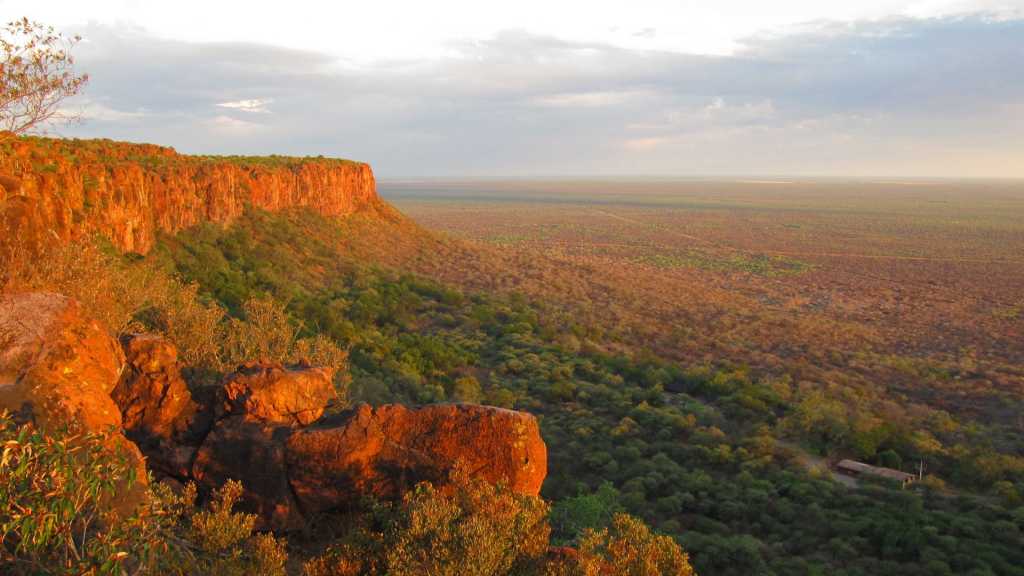Proclaimed Nature Reserve in 1972, it is home to rare and endangered species (leopards, rhinos, sand antelopes, buffaloes, Cape vultures...) and other more common such as giraffes, oryx, kudu, warthogs, impalas and baboons. This park can be visited by private vehicule and many hiking trails will delight walkers.
The cities of Outjo and Otjiwarongo are agricultural and livestock centers with farms as far the eye can see. Some farmers have turned part of their land in "guest farms" or lodges in which one can make a pleasant stop.
The Centre of Namibia will probably not be the heart of your trip but while a quasi-obligatory passage, this region has tourist attraction deserving a little more than a flash passage… The namibian capital, a large african and cosmopolitan city in the heart of the country, on the hills of the central plateau retains, for exemple, an authentic aroma of the old Germany and the wild nature of the Waterberg offers an unparalleled landscape in Namibia.
Advices:
- Do not miss the many colonial buildings and museums in Windhoek!
- In the Waterberg National Park, hikers will find happiness... for others, motorised safaris are the only way to go on the plateau to observe animals, private vehicles are not allowed.
The Great Namibia
Namibia, what else could we ask for? Almost permanent sunshine, great variety of landscapes with wild beauty, national parks rich in fauna and flora. In the West, the Namib desert, the oldest on the planet, the world highest dunes. In the South, the Fish River Canyon, the biggest after the Colorado. In the North, the largest national park in Africa: Etosha. A captivating country with extraordinary natural riches, Namibia deserves its nickname "Jewel of Africa".
When to go?
Subtropical and dry with warm days and cool nights. During the southern summer (from November to March), temperatures vary from 16 to 34°C and in desert areas they can reach 40 to 45°C. In winter (from June to August), they range from 4 to 22℃ and sometimes fall below 0℃ on the relief or in the desert.
The best season to go to Namibia is during the first weeks of November and April. Its not the peak season and the conditions of visit are good. If the high season (May to October) wins the prize of the best climate. Its not necessarily the best because tourists are the most numerous. The rainy season should be avoided if there are plans to explore national parks.
Formalities
The passport must include two blank pages and still be valid for 6 months after the expected date of exit from Namibia. The visa is not compulsory for French nationals. Holders of a French passport are granted tourist visa permits for a maximum of 90 days, which are issued free of charge upon arrival, in particular for immigration checks at Windhoek airport.
For any minor child: a multilingual extract of birth certificate (or an unabridged birth certificate translated into English - certified translation) is required to enter and leave Namibia (in the case of a child traveling with his 2 parents). Please consult the official sites for more information about all the requested documents according to your case.
Health
No vaccination is required for entry into Namibia.
Anti-malarial treatment is recommended (see your doctor). However, it is advisable to check the updating of your usual reminders and vaccinations as for any trip.
Currency
The currency in Namibia is the Namibian dollar (NAD).
Bank cards and traveller’s checks are widely accepted in Namibia, except for the purchase of gasoline especially inside the parks. Major credit cards are accepted in most shops, restaurants and hotels.
Banks and foreign exchange offices make the exchange of your currencies
For your payments, do not hesitate to use the South African rand.
